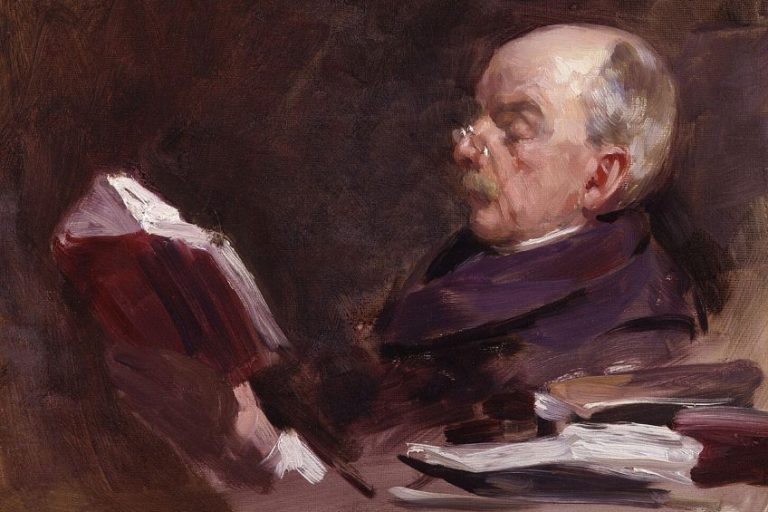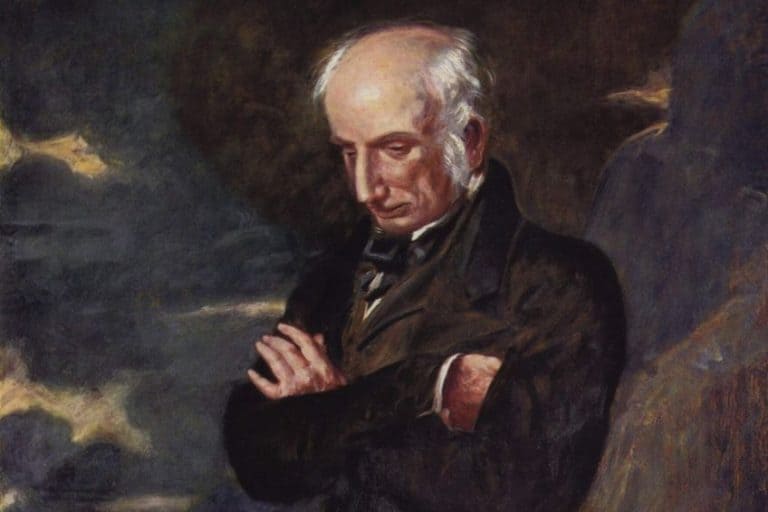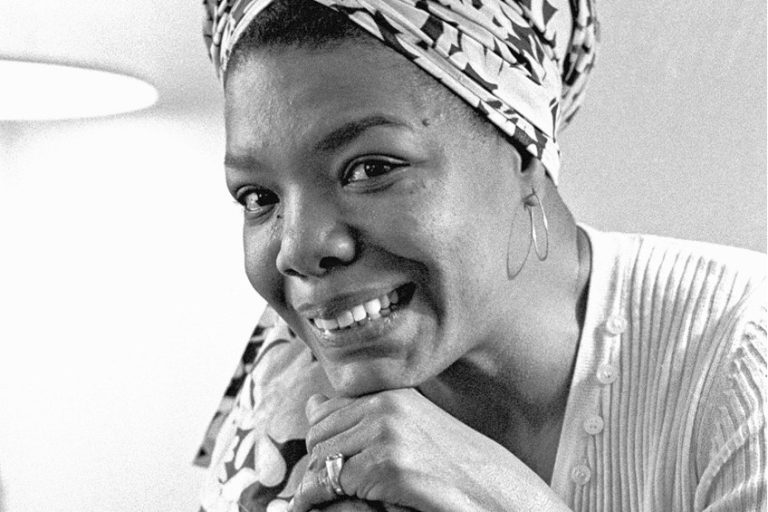“To Be, or Not to Be” by William Shakespeare – An Analysis
To Be, or Not to Be, that is the question that we will answer today. This immensely famous line cannot be seen on its own even if it is the most famous thing that William Shakespeare ever wrote because it is part of a larger context. And so, to understand To Be, or Not to Be by William Shakespeare, we will have to examine the context in which it was written, the nature of the soliloquy as a medium, and the themes of this soliloquy. This To Be, or Not to Be analysis should be beneficial to those who want to understand why this seemingly random question has become such a famous one in English literature. If you have similar thoughts and questions, keep reading!
To Be, or Not to Be by William Shakespeare
| Date Published | Between 1599 and 1601 |
| Type of Text | Soliloquy |
| Rhyme Scheme | Blank verse |
| Meter | Iambic pentameter |
| Topic | Life and death |
William Shakespeare wrote many of the most famous plays and sonnets in the English language, and few lines in his work are as commonly quoted as “To Be, or Not to Be”. Everyone knows this line. They may not understand it, or what it actually means, but they know it. Many also conflate this line with another of the speeches in Hamlet by thinking that the character of Prince Hamlet says these famous lines while holding a skull. But that is actually a different speech, and not actually a soliloquy, from the exact same play.
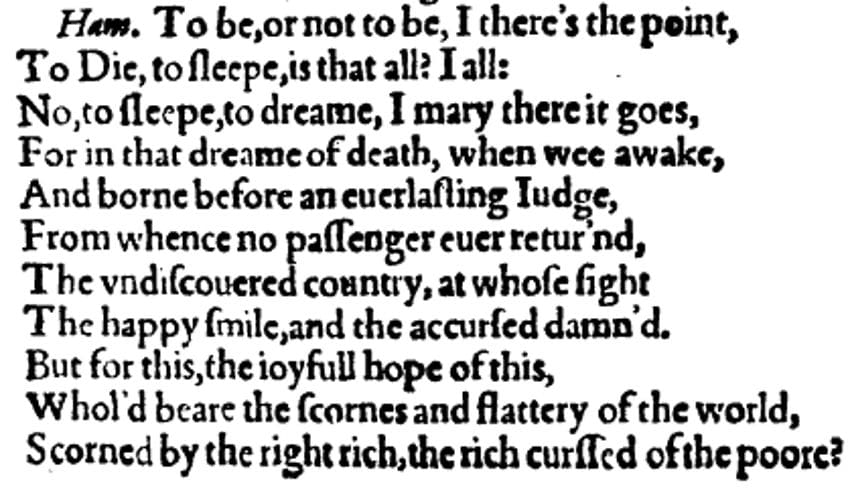
So, if you are also possibly one of those who knows this extremely famous quote but doesn’t know anything else about it, well you’ve come to the right place! This article will go over a full To Be, or Not to Be analysis while also placing it within its context. It is important to understand the soliloquy in its context to truly understand it, but before we dive into that, let’s first slow down and have a look at a summary of To Be, or Not to Be by William Shakespeare.
Summary of To Be, or Not to Be by William Shakespeare
It can be helpful, as a refresher, to get a few summary points before we dive into our full To Be, or Not to Be analysis. So, here are the major points that should be taken into account when examining this famous Shakespearean soliloquy:
- This soliloquy is from Hamlet. The entire To Be, or Not to Be soliloquy can be found in the tale of revenge that is Hamlet, and it has come to be seen as the most famous of all the Hamlet The “To Be, or Not to Be” line has become the most-quoted of all Shakespearean lines, and for good reason.
- This soliloquy is concerned with life and death. While the themes of this famous soliloquy are more multitudinous than only being about these two ideas, they are the central ideas. Prince Hamlet, as he speaks this soliloquy, has existential thoughts about the nature of death, life, conscience, and guilt. It is a breakdown of the human condition.
- This soliloquy does not use rhyme and is in blank verse. We should see even the plays of William Shakespeare as poetic in nature. While this soliloquy is not actually a poem, it is written in iambic pentameter. It does not incorporate rhyme, but it does still maintain a strict metrical structure.
If you want to learn significantly more about this famous quote and the soliloquy it is attached to, then let’s have a look at the next section.
Biography of William Shakespeare
| Poetic Movement | Elizabethan |
| Years | 1564 – 1616 |
| Place of Birth | Stratford-upon-Avon, United Kingdom |
| Known For |
|
This immensely famous figure is probably the writer who has been the most influential in the English language’s development. English courses around the world teach his work to this day. He was born in Stratford-Upon-Avon to non-aristocratic parents and went on to become the most famous playwright of his time. His fame would wane with time for a while, but it has since picked up and one can hardly imagine learning about English literature without the work of William Shakespeare.
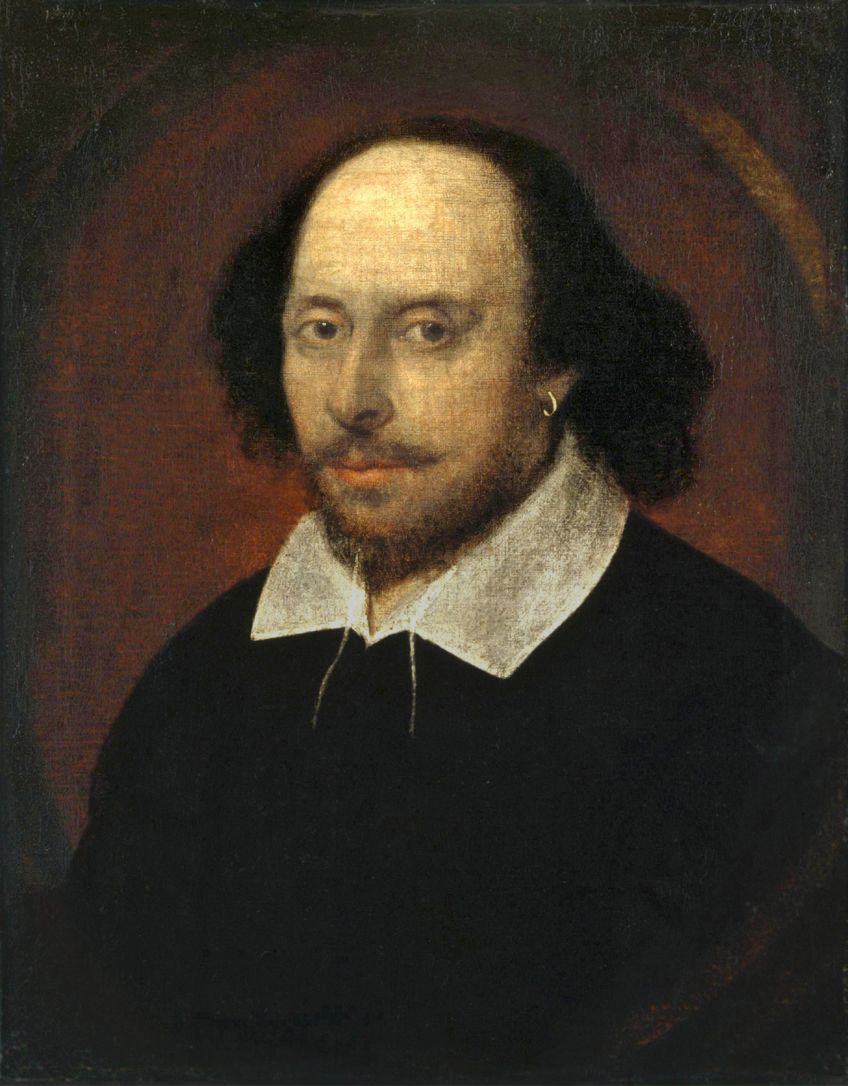
The reason it is important to note that he was not born of aristocracy is because there has been a concerted effort for a very long time to try and discredit Shakespeare and claim that someone else must have written the plays for which he is famous. A peasant boy who learned to read and write at a local grammar school could not possibly have become the Bard! These kinds of accusations are not usually entertained by actual historians as it mostly comes from a place of snobbery.
The Soliloquy as a Medium
To understand To Be, or Not to Be by William Shakespeare, it is important to understand what a soliloquy is in the first place. There are many famous Hamlet soliloquies, but this particular one is definitely the most famous of them all. It is also the most famous soliloquy that Shakespeare ever produced, and many people know the first line of it even if they do not know what the whole thing is about at all. So, what is a soliloquy? This is a type of monologue that is native to drama. While a movie or something similar could include a character soliloquizing, the actual purpose of this form was a necessity in many examples of drama.
The purpose of these monologues is to serve as representations of the thoughts of the character who is speaking.
This was presented as the characters speaking to themselves, but this is not actually accurate. The character is not talking to themselves, like Gollum in The Lord of the Rings. There is no implication of psychosis, but rather expressing to the audience what someone is thinking. In movies, this can be done with voice-over narration, but that is not available in theater. So, we need to represent thoughts in a verbal and visual sense, and To Be, or Not to Be by William Shakespeare is one of the best-known of all soliloquies.
The Context of Hamlet
Hamlet is one of the most famous plays that Shakespeare ever wrote. It tells the story of Prince Hamlet. His father has just been murdered, and his uncle, Claudius, has become the new king. In the process, he also marries Hamlet’s mother. For those familiar with The Lion King, this may read rather familiarly. Well, that’s because the Disney film is a loose adaptation of Hamlet but with animals instead of Danish aristocracy.

Title page of Hamlet 2nd quarto (1604) by William Shakespeare; William Shakespeare, Public domain, via Wikimedia Commons
The story revolves around Prince Hamlet learning that Claudius murdered his father, and so he plots his revenge. Over the course of the play, he has to deal with his feelings about this, the place of his mother and lover in his life, and the political fallout that will occur as a result of him exacting his revenge. It is often seen as the greatest play that William Shakespeare ever wrote, and it is a very good one. To understand the To Be, or Not to Be soliloquy, it is necessary to have some of this context. You should know who Hamlet is and why he is having the thoughts that he has. So, with this brief introduction of the play itself out of the way, we can move into a To Be, or Not to Be analysis.
An In-Depth To Be, or Not to Be Analysis
We have already briefly discussed the context of Hamlet in some detail, but before we dive into our To Be, or Not to Be analysis, we may need some more specific context. In Act 3, Scene 1, in which the soliloquy occurs, Hamlet has just decided to try and determine the truth about his father’s assassination by staging a play that also involves murder so that he can watch the new king’s reaction.
The king’s advisor has, in turn, decided to try and determine the cause of Prince Hamlet’s distress, and it is here where Prince Hamlet soliloquizes as he is alone, but he is eventually interrupted during his thoughts. It is before that interruption where this soliloquy starts.
Before we get into our To Be, or Not to Be analysis, it is worth stating that the sections in which we analyze this text are not naturally found in the text. Instead, we have broken the soliloquy up into more individual and bite-sized portions. The actual soliloquy is read as one continuous text, and that should be remembered going forward.
Section One
To be, or not to be, that is the question:
The first line of this immensely famous Hamlet soliloquy is probably the most important to understand the remainder of the soliloquy. This is where we are presented with this important question. It is a question that Prince Hamlet will attempt to answer throughout the soliloquy. It is also a rather general question. To be or not to be what? His musings continue in the next section.

Section Two
Whether ’tis nobler in the mind to suffer
The slings and arrows of outrageous fortune,
Or to take arms against a sea of troubles
And by opposing end them.
The first of his thoughts is considered with a binary of mental suffering versus physical action. Should he simply suffer in his own mind, or should he do something? He does not know, and this soliloquy is oriented around questions of this variety.
There are no real answers, but rather more questions upon questions for us to contemplate and consider.
Section Three
To die—to sleep,
No more; and by a sleep to say we end
The heart-ache and the thousand natural shocks
That flesh is heir to: ’tis a consummation
Devoutly to be wish’d.
The first line compares death to sleep, and this section considers the possibility of death. One does not suffer after one has died, after all. In addition, he would not have to commit to any kind of action if he were dead. One of the tragic flaws that Prince Hamlet faces in his life is the flaw of indecision. He does not know what to do, and to eternally sleep would be a means of eternally avoiding making a decision. Remember that his decision would involve killing his own uncle, and this is not a pleasant thing to potentially be forced to do.

Section Four
To die, to sleep;
To sleep, perchance to dream—ay, there’s the rub:
For in that sleep of death what dreams may come,
When we have shuffled off this mortal coil,
Must give us pause—there’s the respect
That makes calamity of so long life.
Here, there is a return to the idea of sleep and death in this section. However, we now have the idea of dreaming, and that death and the “dreaming” that comes with it will mean that we are no longer here. We are no longer alive and privy to the happenings in the world. And what will happen if we leave this world too early? What will we miss?
This section also includes the famous expression “shuffled this mortal coil”, which is used to mean death.
This death may be a salvation for him, but it is also something that may take us from this place while we still have something to do here. It is a difficult thing to contemplate because there is so much difficulty in life that death does seem easier, but is the easier option the better one to choose?
Section Five
For who would bear the whips and scorns of time,
Th’oppressor’s wrong, the proud man’s contumely,
The pangs of dispriz’d love, the law’s delay,
The insolence of office, and the spurns
That patient merit of th’unworthy takes,
When he himself might his quietus make
With a bare bodkin?
Prince Hamlet, in this section, continues to wonder why people are even willing to continue to bear these “whips and scorns” which are the injustices of the world. Much of this section serves to reiterate on this kind of an idea. Why do people continue to bear it in silence and inaction? Should they do something about these kinds of injustices or should they give in to them and allow them to transpire?
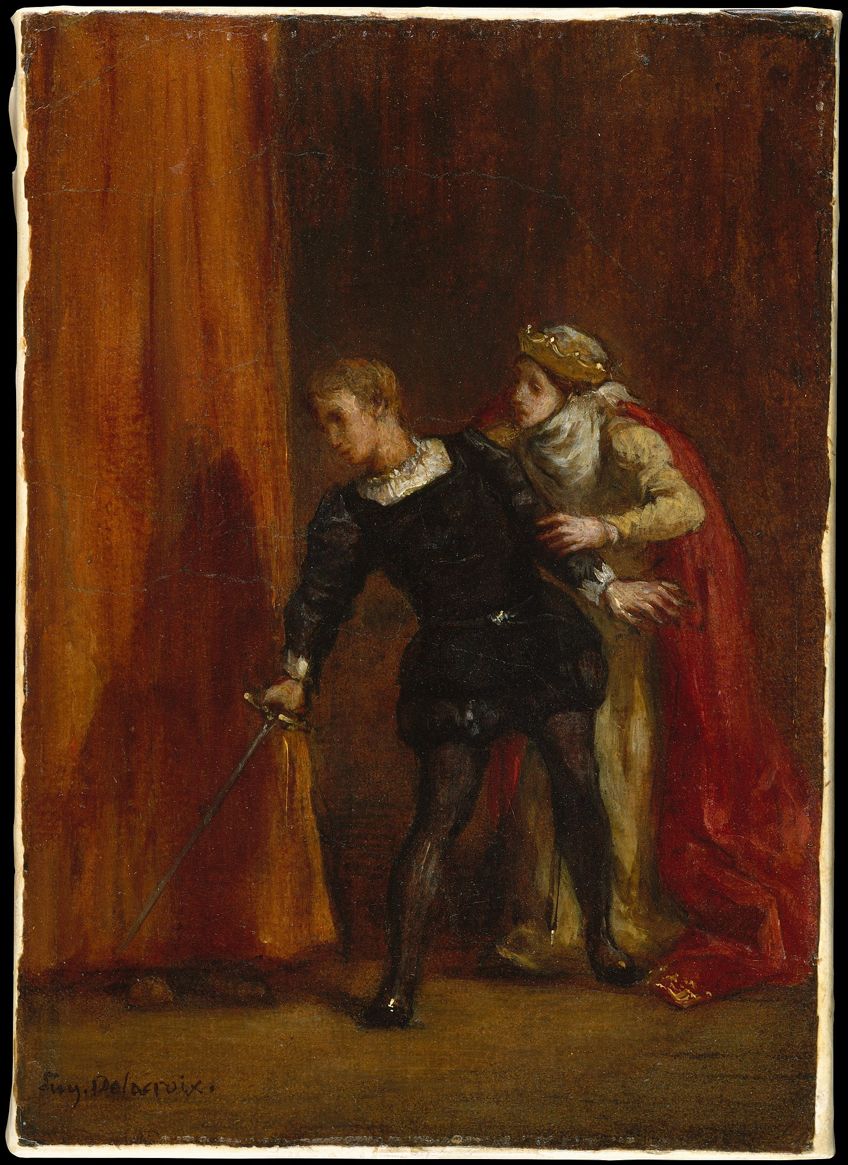
There are also significant personal details about Prince Hamlet more specifically in this section. He mentions the injustices of oppressors, lovers, and laws. There are political, personal, and romantic issues at play here, and these are the difficulties that Prince Hamlet faces. These kinds of difficulties are obviously those that Prince Hamlet faces within the narrative, such as his relationship with Ophelia, his potential wife on a personal level and with Claudius, his uncle, on a political level (although personal feelings have become important there too). However, while these difficulties are ones that Prince Hamlet does face over the course of Hamlet, they are also ones that we can, in the abstract, understand in our own lives. We also face difficulties in terms of our personal, political, sociological, and cultural lives. These ideas and themes are not exclusive to this particular play or this soliloquy.
Section Six
Who would fardels bear,
To grunt and sweat under a weary life,
But that the dread of something after death,
The undiscovere’d country, from whose bourn
No traveller returns, puzzles the will,
And makes us rather bear those ills we have
Than fly to others that we know not of?
Firstly, the very first line of this section may require a brief elaboration as “fardels bear” is not used in contemporary English, and so it can instead be seen as “burdens bear”. So, this section opens by asking who would bear these burdens. Who would continue to struggle and “sweat” under these kinds of difficulties?
It is here where he states that the problem with death is that it is a puzzle that we do not know, and it is an undiscovered and unknown place.
Once you have died, there is no coming back. This is what makes us bear our burdens. The last two lines connect this unknown in death to the unknown in life. We bear the burdens of what we know in life because we are afraid of what we don’t know. It is essentially a kind of “better the devil you know” kind of a mentality that is being exhibited here.
Section Seven
Thus conscience doth make cowards of us all,
And thus the native hue of resolution
Is sicklied o’er with the pale cast of thought,
And enterprises of great pith and moment
With this regard their currents turn awry
And lose the name of action.
The first line of this final section of the soliloquy opens by affirming that this unknown, and the fear of it, has rendered us into cowards. He sees his own resolve as something that is sickly and pale. It is something that may lead him to inaction when he knows that he may need to do something drastic in his life. He still does not know for certain that his uncle is his father’s murderer, but he seeks to find out. And if Claudius did kill his father? What will he do? Will he kill him? Will he leave behind his cowardice and inaction? That is yet to be seen at this point in the narrative. And so we end off our analysis of the most famous of all the Hamlet soliloquies.

The Themes of To Be, or Not to Be by William Shakespeare
This particular soliloquy is likely the best-known of all the Hamlet soliloquies, and it is also one of the most profound. While the To Be, or Not to Be analysis above has covered the majority of the ideas, let’s have a quick overview of them. The primary idea that this soliloquy is trying to discuss is the general question of human experience and existence.
This soliloquy is existential in nature as it asks questions about life or death.
Is it better to strive through life or to simply give up? Is there a reason for it all? Should we battle against the unknown or embrace the unknown? The soliloquy contemplates ideas of taking one’s own life and the fear that comes with contemplating that action.

It asks us whether we should continue to suffer or take ourselves away from the suffering. Is it cowardice to run from the pain or should we face it head-on? There are many questions that this soliloquy asks, and it does not present us with answers. We cannot, for certain, know the truth of the matter. All we can do is contemplate as Prince Hamlet does. Do his later actions in the play reflect his musings here? That is the question.
To Be, or Not to Be, that is the question that we have attempted to answer today in this article. We have discussed the context of the famous To Be, or Not to Be by William Shakespeare soliloquy alongside an analysis of this immensely famous section of Hamlet. Hopefully, this has been a good general discussion of the ideas expressed in this Shakespearean soliloquy, and while it is the best-known of those he produced, there are also many others. So, if you enjoyed this one, perhaps have a look at some of the others that he wrote!
Frequently Asked Questions
What Is To Be, or Not to Be by William Shakespeare?
This is a soliloquy from Hamlet. It can be found in Act 3, Scene 11 of the play, and has become the best-known soliloquy that Shakespeare ever wrote. While there are various other Hamlet soliloquies, this is by far the one most associated with the play and the playwright. It is one of the most famous in the English language, and probably the most oft-repeated quote from the entirety of Shakespeare’s writings.
What Is Hamlet by William Shakespeare?
This was one of the greatest Shakespearean plays. It was also his longest play. The story is set in Denmark and concerns revenge. The king has been murdered and his brother has taken his place, and Prince Hamlet, the son of the murdered king, plots his uncle’s assassination. The play explores ideas around murder, betrayal, existential questions, and much more. And the To Be, or Not to Be soliloquy has become the most famous of all the Hamlet soliloquies.
Who Was William Shakespeare?
This figure is probably the most influential poet and playwright in the English language. His work has inspired many, introduced new words and phrases into the language, and solidified the sonnet as a staple of English poetry. He was prolific during his era and produced some of the best-known plays in English.
What Is a Soliloquy?
This is a form of monologue found in drama. The idea behind the soliloquy is that a character speaks when no one else is around, and it generally represents their thoughts and feelings. This is portrayed as the characters speaking to themselves, but they are not actually talking to themselves. Rather, they are thinking aloud for us to hear, and the equivalent of this in movies would be a narrator character who tells us what they are thinking as the action of the film occurs.
What Are Some Other Famous Shakespeare Soliloquies?
There are many famous soliloquies for which Shakespeare has become well-known. Some of his most famous can be found in Hamlet, but there are also those in other texts, such as Is this a dagger which I see before me? from Macbeth or If we shadows have offended from A Midsummer Night’s Dream. Thus, there are a great many phenomenal soliloquies that Shakespeare produced throughout his career.
Justin van Huyssteen is a freelance writer, novelist, and academic originally from Cape Town, South Africa. At present, he has a bachelor’s degree in English and literary theory and an honor’s degree in literary theory. He is currently working towards his master’s degree in literary theory with a focus on animal studies, critical theory, and semiotics within literature. As a novelist and freelancer, he often writes under the pen name L.C. Lupus.
Justin’s preferred literary movements include modern and postmodern literature with literary fiction and genre fiction like sci-fi, post-apocalyptic, and horror being of particular interest. His academia extends to his interest in prose and narratology. He enjoys analyzing a variety of mediums through a literary lens, such as graphic novels, film, and video games.
Justin is working for artincontext.org as an author and content writer since 2022. He is responsible for all blog posts about architecture, literature and poetry.
Learn more about Justin van Huyssteen and the Art in Context Team.
Cite this Article
Justin, van Huyssteen, ““To Be, or Not to Be” by William Shakespeare – An Analysis.” Art in Context. December 4, 2023. URL: https://artincontext.org/to-be-or-not-to-be-by-william-shakespeare/
van Huyssteen, J. (2023, 4 December). “To Be, or Not to Be” by William Shakespeare – An Analysis. Art in Context. https://artincontext.org/to-be-or-not-to-be-by-william-shakespeare/
van Huyssteen, Justin. ““To Be, or Not to Be” by William Shakespeare – An Analysis.” Art in Context, December 4, 2023. https://artincontext.org/to-be-or-not-to-be-by-william-shakespeare/.





